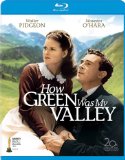| Reviews & Columns |
|
Reviews DVD TV on DVD Blu-ray 4K UHD International DVDs In Theaters Reviews by Studio Video Games Features Collector Series DVDs Easter Egg Database Interviews DVD Talk Radio Feature Articles Columns Anime Talk DVD Savant Horror DVDs The M.O.D. Squad Art House HD Talk Silent DVD
|
DVD Talk Forum |
|
|
| Resources |
|
DVD Price Search Customer Service #'s RCE Info Links |
|
Columns
|
|
|
How Green Was My Valley
THE MOVIE:
Please Note: The stills used here are taken from promotional materials, not the Blu-ray edition under review.
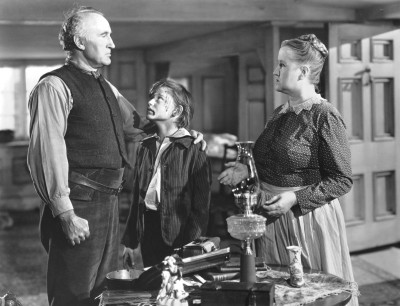
The 1941 winner of the Best Picture Oscar, How Green Was My Valley is one of John Ford's nostalgic tributes to a foreign land and a foreign time. Narrated from a modern vantage point, but set in a Welsh mining village at the outset of the 20th Century, the screenplay by Philip Dunne, adapted from a novel by Richard Llewellyn, recalls the changes that occurred in a country village as industry took over the town. The film's title is emotionally charged, its past tense very much intentional, referring to the look of the land before the black smoke from the coal mine darkened its resources and before unfair labor practices ground its men under its wheels.
The man telling the story is Huw (pronounced Hugh, and played as a child by Roddy McDowell). He is the youngest of the Morgan clan, and the first to have the opportunity for a proper education. His early days at the city school come not long after the first of his brothers have left for other locales, seeking work after the mining corporation cut them loose for cheaper, more desperate men. The travails of Huw's upbringing are intentionally Dickensian, a nod clearly signaled by Ford. When the young boy is laid up after an accident where he and his mother (Sara Allgood) fell into an icy lake, Dickens novels, among others, keep him company. The story the grown man is recalling is that of his own rise from humble beginnings and his own resistance to change. Despite his schooling, Huw eventually goes down into the hole himself, looking to live the same life as his father and brothers.
Just as he did in his masterpiece The Quiet Man, the Ford of How Green Was My Valley longs for the tradition and togetherness of small-town life across the pond. For Ford, the people of Wales, just like the people of Ireland, represent the last stand against modernity. They live in faith, both in their god and in the belief that a man should be able to earn his way with his hands. There is an interesting melding of an old-fashioned work ethic with progressive socialist ideas. It seems almost subversive that How Green Was My Valley contains scenes where the tenets of unionizing are reconciled with the teachings of the Christian church. (Not that they shouldn't, not if you really know your Bible.) The town pastor, Mr. Gruffydd (Walter Pidgeon), is shown as a man of reason and intellect, and one who wants the best for his parishioners, even at his own expense. In the film's main romantic subplot, the preacher turns down marrying Huw's sister, Angharad (Maureen O'Hara), because her other suitor can offer her a better life. The irony, of course, is that he exiles her to an unhappy union, and they both become the victims of the nastiest small-town foible: gossip.
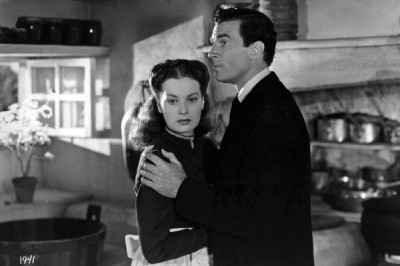
Ford originally intended to shoot How Green Was My Valley on location, but World War II made this impossible. Instead of going to Wales, the director and his crew built a convincing facsimile of a Welsh village in the California mountains. You wouldn't be able to tell if no one told you. Right from the very opening, Ford and cinematographer Arthur C. Miller use the natural surroundings to give the movie an air of authenticity. The black-and-white shots of the village and the miners getting off work have a convincing documentary feel about them. So, too, do the interiors, including the sparsely decorated but otherwise spacious Morgan household. Ford contrasts this realism with a near magical idealism. All the scenes set in nature have a heightened level of expression about them. The winter landscapes are harsh and treacherous, with snow-covered slopes taking on a near-medieval grotesqueness; on the other side, the meetings between Huw and Gruffydd in the forest are idyllic and painterly. In Ford's eyes, these are the sites that the industrial age eventually dismantled. This is his version of Eden, and man's hubris and ambition has banished him to something else entirely.
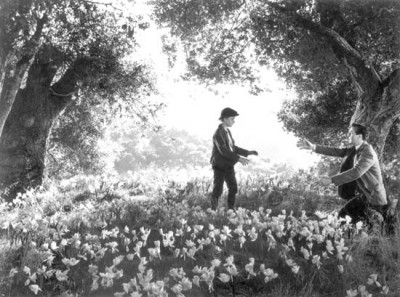
The same filter of amplified reality is also applied to the soundtrack. At times, and particularly in its first reel, How Green Was My Valley is practically a musical. Ford drops out all other sound and instead treats us to a chorus of voices. The men leaving the mine sing together as a church choir would (and later does). Huw's earliest memories are shown almost without dialogue, the scenes cut to Alfred Newman's warmly sentimental orchestration. As was often the case in Ford's cowboy pictures, music brings the working people together, it gives them a common theme. Humor and song are the cures for a difficult life, and How Green Was My Valley has plenty of both. There is one amusing interlude where Ford's regular comic muse, Barry Fitzgerald, goes to Huw's school to teach his sadistic teacher a lesson--one in boxing! It's a little over the top compared to the rest of the film, but it's a nice respite during one of How Green Was My Valley's more dramatic stretches.
The end of the film is born of harsh truths and the difficulty of the working life, but Ford takes these gritty realities and effortlessly shifts them into something transcendent. The final montage is as cleansing to the spirit as the early scenes of the miner's washing the black dust from their skin was for their physical bodies. Here, How Green Was My Valley also shifts from nostalgia and into something more present. Huw's view of his past and of his family becomes immediate, the memories catch up with him. Times may change, but the bonds of men do not falter, not as long as those who remember never lose sight of what truly matters.
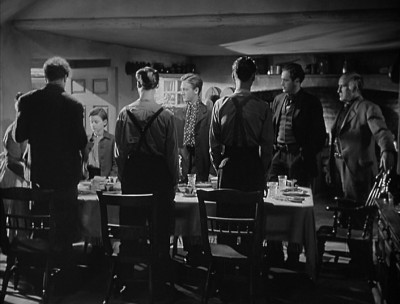
THE BLU-RAY
Video:
Fox has been doing a great job of issuing their Oscar winners on Blu-Ray in the past couple of months, and the high-definition, full frame 1.33:1 presentation of How Green Was My Valley is no exception. As I mentioned above, you'll notice the beauty of the black-and-white photography right way. From the very first shots, the crispness of the image and level of detail is evident. The BD of How Green Was My Valley has a clear picture, without any spots or blemishes. The balance between light and shadow is perfect, and the light grain maintains the film's original cinematic aesthetic.
Sound:
The main soundtrack is given a bold 5.1 DTS-HD Master Audio remixing, and though it does not contain a lot of small ambient details, the overall mix has a lot of power. The music sounds particularly good, taking lead when it's supposed to, and enhancing the onscreen drama when it's meant to be background.
Other audio options include a more traditional mono mix, as well as a mono Spanish dub. The French dub is also 5.1.
Optional English Closed Captioning and Spanish subtitles are offered, as well.
Extras:
The extras on the disc are quality holdovers from the standard-definition Fox release from several years ago: an audio commentary with John Ford-expert Joseph McBride and actress Anna Lee Nathan (Huw's aunt Bronwyn in the film); a short documentary on the making of the movie; and How Green Was My Valley's original theatrical trailer.
FINAL THOUGHTS:
Highly Recommended. Indeed, John Ford's 1941 classic How Green Was My Valley has a lot to recommend it. It is a movie about family, both the kind bound by blood and the ones forged through work and friendship; it is an ode to the land and its gifts; it embraces spirituality, but also man's can-do nature; and it bathes itself in music, letting the human chorus lead the narrative when voices in song will be more effective than those that speak. It is maudlin and mournful for times past, but it doesn't let itself get burdened by its sentimentality. The accomplished cast lives every frame of Ford's vision, inhabiting his manufactured village and making it look as real as the Welsh original it emulates. How Green Was My Valley is a movie that stirs the soul and inspires, making what is otherwise old fashioned seem current and endlessly relevant. It's a special moment of pause for a man known for shooting John Wayne horse operas, and is every bit as important as other sociopolitical movies he made, like The Informer and Grapes of Wrath, or the hopelessly romantic The Quiet Man. It also looks lovely in high-definition, making this new Blu-Ray a must-buy item.
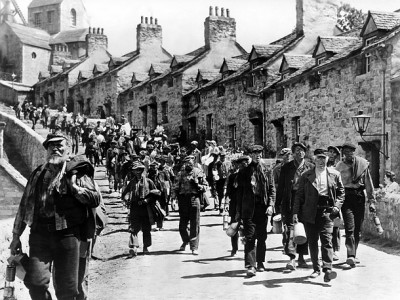
Jamie S. Rich is a novelist and comic book writer. He is best known for his collaborations with Joelle Jones, including the hardboiled crime comic book You Have Killed Me, the challenging romance 12 Reasons Why I Love Her, and the 2007 prose novel Have You Seen the Horizon Lately?, for which Jones did the cover. All three were published by Oni Press. His most recent projects include the futuristic romance A Boy and a Girl with Natalie Nourigat; Archer Coe and the Thousand Natural Shocks, a loopy crime tale drawn by Dan Christensen; and the horror miniseries Madame Frankenstein, a collaboration with Megan Levens. Follow Rich's blog at Confessions123.com.
|
| Popular Reviews |
| Sponsored Links |
|
|
| Sponsored Links |
|
|
| Release List | Reviews | Shop | Newsletter | Forum | DVD Giveaways | Blu-Ray | Advertise |
|
Copyright 2024 DVDTalk.com All Rights Reserved. Legal Info, Privacy Policy, Terms of Use,
Manage Preferences,
Your Privacy Choices | |||||||









